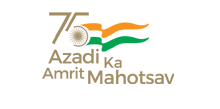Tripura is one of the smallest state in the country located at Northeast India, covers 10,491.69 square km. and bordered by Bangladesh to the North, South, and West.
In 15 October, 1949, the princely state merged with the Indian Union. Initially, a part 'C' state, it became a Union territory with the reorganization of states in 1956. In 1972, Tripura attained the status of a full-fledged state.
Tripura comes second next to Assam in-respect of population and population density among the North Eastern States of India. As per 2011 census the state population is 36,73,917 with 18,74,376 males and 17,99,541 females.
The sex ratio of the state is 960 females per thousand males, higher than the national ratio 940. The density of population is 350 persons per square kilometer according to Census 2011.
The health care infrastructure is divided into three tiers – the primary health care network, a secondary care system comprising district and sub-divisional hospitals and tertiary hospitals providing specialty and super specialty care. As on 31st December 2020 the position of Health Institutions is as mentioned below:
- State Hospital : 06 (Allopathic - 04, Homeopathic - 01, Ayurvedic - 01)
- District Hospital : 06 (Allopathic)
- Sub-divisional Hospital : 12 (Allopathic)
- Community Health Centre (CHC) : 23 (Allopathic)
- Primary Health Centre (PHC) : 115(Allopathic including 7 Urban PHC)
- Health Sub Centre (HSC) : 1001 (Allopathic)
- Ayurvedic Dispensary : 39 (Ayurvedic Dispensary - 36, Satellite Dispensary - 02 and Rajbhawan Ayurvedic Clinic - 01)
- Homeopathic Dispensary : 73










